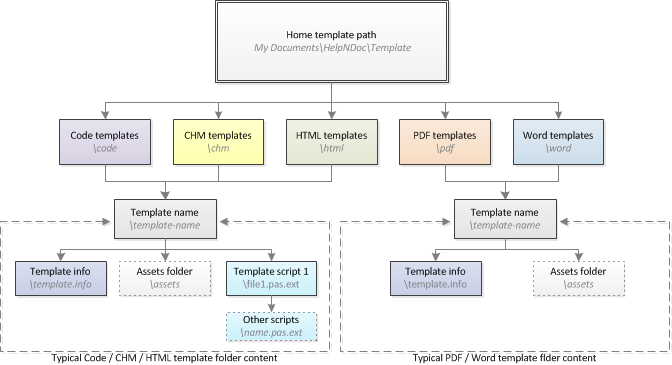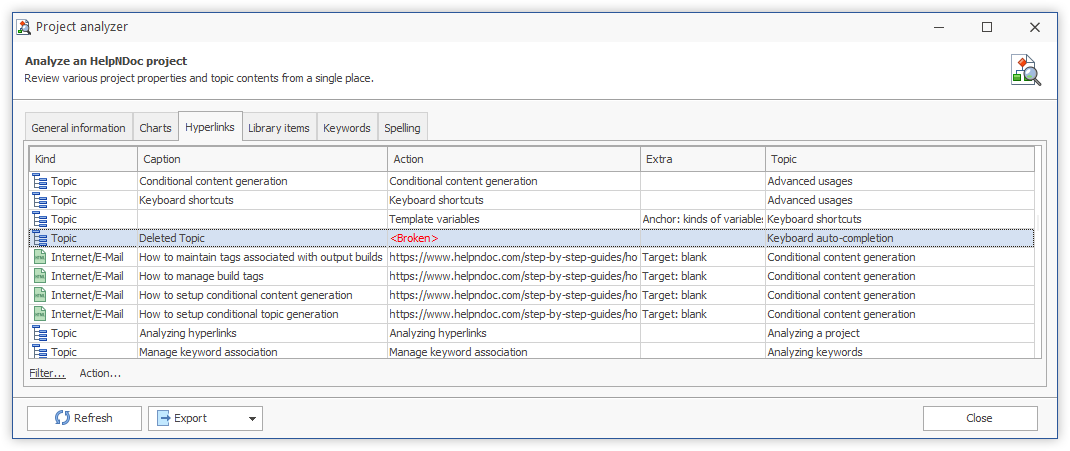

- USEFUL COMMANDS FOR HELPNDOC INSTALL
- USEFUL COMMANDS FOR HELPNDOC UPDATE
- USEFUL COMMANDS FOR HELPNDOC FULL
- USEFUL COMMANDS FOR HELPNDOC WINDOWS
Now that you own the files, you have to give yourself permission to modify themġ) R-Click on Program Files -> Properties -> Security Tabģ) Select Administrators (any entry) -> EditĤ) Change the Apply To drop down box to This Folder, Subfolder & Filesĥ) Put check in Full Control under Allow column -> OK -> Applyħ) When it finishes, the dialog boxes may hide behind the Explorer window. So now weĢ) R-Click on Program Files -> Properties -> Security Tabĥ) Select Administrators -> Put a checkmark in Replace owner on subcontainers & objects -> Applyħ) When it finishes, Click OK on all boxes to close everything The Program Files folder is set to the Trusted Installer group and the Administrator doesn't have the rights to change anything. Even though you are logged on as an Administrator, you can't change files that don't belong to you. The Preprocess BizTalk Bindings command, which is only useful when using a master (template) bindings XML file, will preprocess the master bindings XML file (usually PortBindingsMaster.xml) to produce the final bindings file (usually PortBindings.xml). If the permissions are dimmed, it means the permissions are inherited from a parent object.īefore you can do anything, you must turn off the UAC, or you will be locked out of the following steps.ġ) Start -> Settings -> Control Panel -> User AccountsĢ) Click "Change User Account Control Settings"ģ) Move slider all the way down to "Never Notify" This can be useful if youve accidentally altered a port configuration or orchestration binding. In the Name list box, select the user, contact, computer, or group
USEFUL COMMANDS FOR HELPNDOC WINDOWS
USEFUL COMMANDS FOR HELPNDOC UPDATE
The Update SSO from Settings Spreadsheet command, which is only useful when IncludeSSO is set to True, will load the most current environment settings XML into SSO for the Local environment. That process always happens during deployment, so this command is often used for testing. This can be useful if you've accidentally altered a port configuration or orchestration binding. The Import BizTalk Bindings command allows you to quickly re-import your project's bindings XML file. That process always happens during deployment, so this is not a commonly used command. The Export Environment Settings command will export one environment-specific XML file for each environment defined in your Excel settings spreadsheet, usually located in EnvironmentSettings\SettingsFileGenerator.xml. The command respects the current solution build configuration (Debug, Release, etc.). NET assembly built by the project currently selected in Solution Explorer.
USEFUL COMMANDS FOR HELPNDOC INSTALL
The GAC Output of Selected Project command will install (or reinstall) in the GAC the. The most common usage is to terminate all suspended messages in the application so that you can undeploy it. The Terminate All Service Instances command will terminate all service instances associated with the current BizTalk application (the one your deployment project targets). The command respects the BizTalkHosts ItemGroup in your deployment project file (.btdfproj), which allows you to limit the hosts affected by host instance restarts. The Bounce BizTalk command will restart one or more local BizTalk host instances.


Here's a screenshot of the Deployment Framework for BizTalk menu:Īs with the Deploy and Undeploy commands, the output of every command will appear in the Visual Studio Output window, and the commands are only available when your BizTalk solution is open and a Deployment Framework project folder exists below the solution root folder.

The Deployment Framework for BizTalk's Visual Studio add-in provides a number of commands besides application deploy/undeploy that help make your BizTalk development time more productive.


 0 kommentar(er)
0 kommentar(er)
